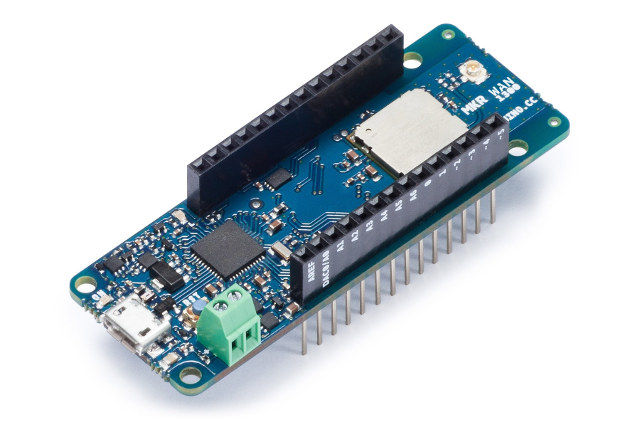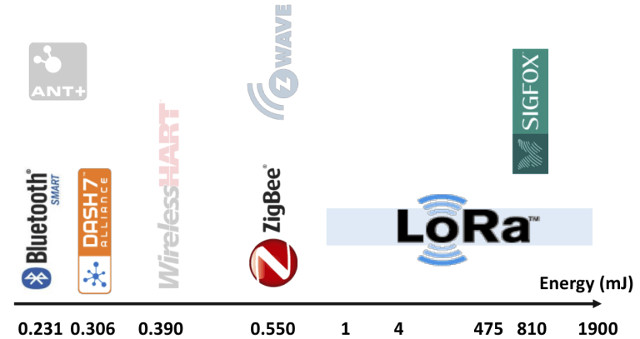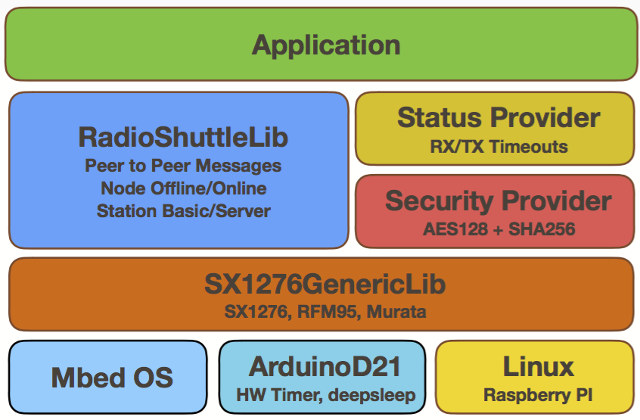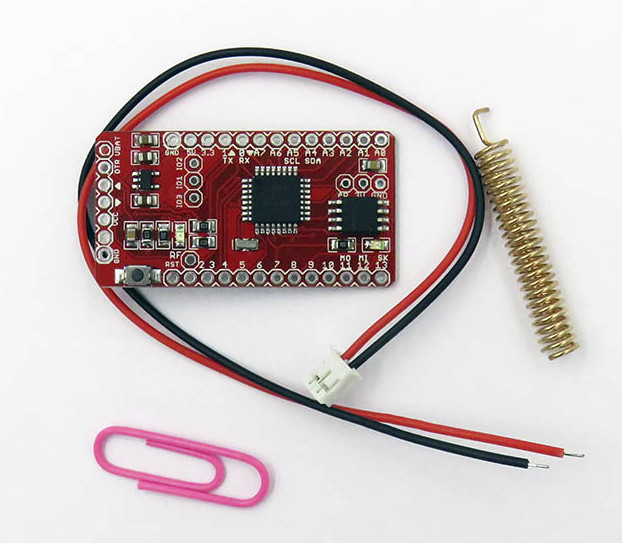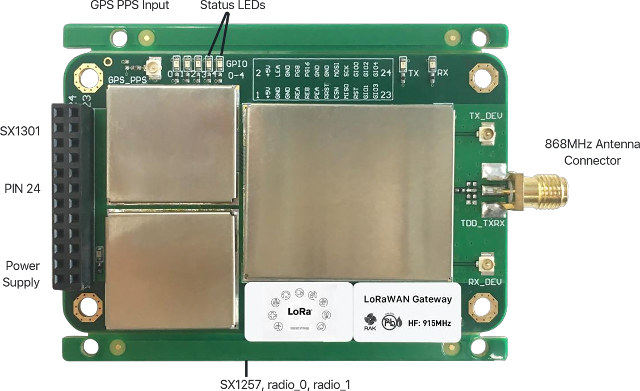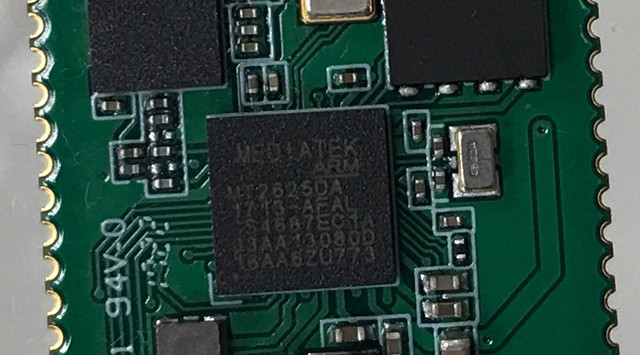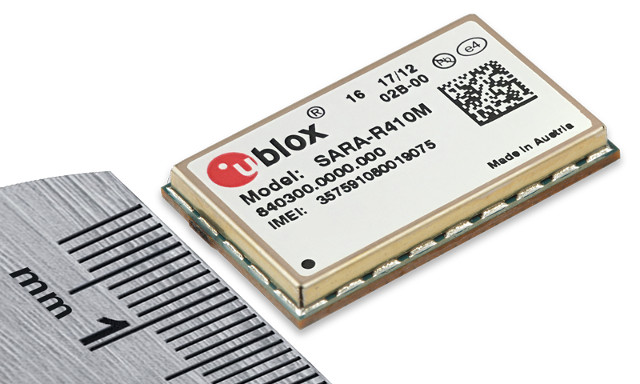Arduino has introduced two new boards right in time for Maker Faire New York: MKR WAN 1300 with a LoRa radio, and MKR GSM 1400 with a “3.75G” cellular module, both software compatible with Arduino Zero, and in Arduino MKRZero board form factor. MKR WAN 1300 Board Arduino MKR WAN 1300 specifications: MCU – Microchip Atmel SAMD21 32-bit ARM Cortex M0+ MCU @ 48 MHz with 32 KB SRAM, 256 KB flash (8KB for bootloader) Digital I/O Pins – 8x digital I/Os, 12x PWM, UART, SPI, and I2C, 8x external interrupts Analog Pins – 7x analog inputs (8/10/12-bit ADC), and 1x analog output (10-bit DAC) DC Current per I/O Pin – 7 mA LPWAN connectivity Murata CMWZ1ZZABZ LoRa module based on Semtech SX1276 and STMicro STM32L Antenna power – 2dB Carrier frequency – 433/868/915 MHz Working regions – EU/US USB – 1x micro USB port for power and programming […]
WizziKit is a DASH7, LoRa and Sigfox Wireless Sensor & Actuator Network Kit
Over the last few years, I’ve written several article about LoRaWAN, Cellular IoT, and Sigfox based long range low power IoT solutions. DASH7 is another LPWAN (Low Power Wide Area Network) standard that operates on the same 868 and 915 MHz ISM bands as LoRa and Sigfox, but has much lower power consumption, and the cost of a shorter range up to 500 meters, instead of the 5+km associated with LoRa or SigFox. The DASH7 Alliance Protocol (D7A) is an Open Standard, and if you want more details you can download version 1.1 of the specifications on DASH7 Alliance website. I’m writing about DASH7 today thanks to an article on ST blog about Wizzilab’s Wizzikit, an evaluation kit and framework for DASH7 with a gateway, and several nodes that can also optionally support LoRaWAN and Sigfox protocols. The kit is comprised of the following items: WizziGate GW2120 Ethernet/Wifi/Dash7 gateway – based […]
RadioShuttle Network Protocol is an Efficient, Fast & Secure Alternative to LoRaWAN Protocol
LoRaWAN protocol is one of the most popular LPWAN standards used for the Internet of Things today, but some people found it “lacked efficiency, did not support direct node-to-node communication, and was too costly and far too complicated for many applications”, so they developed their own LoRa wireless protocol software called RadioShuttle, which they claim is “capable of efficiently sending messages in a fast and secure way between simple LoRa modules”. Some of the key features of the protocol include: Support for secure or insecure (less time/energy) message transmission, multiple messages transmission in parallel Unique 32-bit device ID (device number) per LoRa member, unique 16-bit app ID (program number for the communication) Security – Login with SHA-256 encrypt password; AES-128 message encryption Air Traffic Control – Nodes only send if no LoRa signal is active on that channel. Optimized protocol – Message delivery within 110 ms (SF7, 125 kHz, free […]
$6.10 Loraduino Board Combines LoRa and Atmega328P MCU
We’ve previoulsy seen low costs SX1278 LoRa modules @ 433 MHz which you could connect to your own board, but Electrodragon is now selling Loraduino board with an Atmega328P MCU and SX1278 for just $6.10 / 5 Euros plus shipping, and using a layout similar to Arduino Pro Mini. Loraduino specifications: MCU – Microchip / Atmel Atmega328P MCU with Arduino pro mini bootloader Storage – 16Mbit SPI flash for data LoRa Semtech SX1278 IC with 433mhz, or 470mhz central frequency 10 km max range 20dbm max power rate (configurable by software) Tx current: 120 mA @ + 20 dBm; 90mA @ + 17dBm; 29mA @ + 13dBm Data Rate – 1.2K to 300Kbps with FSK; 18 bps to 37.5Kbps with LoRa Expansion SX1278 Lora: leadout for pins IO1, IO2, IO3 Atmega: 14x digital input/output pins (including 6x PWM outputs), 6x analog inputs (TBC) Misc – Programmable LED (D7), power LED, […]
RakWireless RAK831 LoRa Gateway Module is Based on Semtech SX1301 Base Band Processor
We’ve previously covered several products from RakWireless, with a Realtek WiFi IoT board, a WiFi camera board, and a Amazon Alexa compatible audio board. The company has now launched RAK831, a LoRaWAN gateway board powered by Semtech SX1301 base band processor, and working with their RAK811 LoRa node or other compatible nodes. RAK831 LoRA gateway board specifications: Connectivity Semtech SX1301 base band processor with LoRa concentrator IP Frequency bands – 433, 470, 868, or 915 MHz Sensitivity – Down to -142.5 dBm Maximum link budget – 162 dB Output power level – up to 23 dBm Emulates 49 x LoRa demodulators 12x parallel demodulation paths 1x (G)FSK demodulator 2x SX1257 Tx/Rx front-ends high frequencies 2x SX1255 Tx/Rx front-ends low frequencies Range – Up to 15 km (Line of Sight); several kilometers in urban environment GNSS – Optional GPS support Host Interface – SPI Expansion – 24-pin 2.54mm pitch “DB24” header […]
Mediatek MT2625 NB-IoT SoC is Designed for Cellular IoT Devices working Worldwide
Mediatek has recently unveiled MT2625 SoC based on an ARM Cortex-M core, equipped with an NB-IoT “WorldMode” modem allowing for a single design worldwide, and supporting the latest 3GPP Release 14 (LTE Cat NB2) specification. Mediatek MT2625 specifications: CPU – ARM Cortex-M @ up to 104 MHz with FPU Embedded Memory – 4MB PSRAM Storage – 4MB NOR Flash Connectivity NB-IoT compatible with 3GPP Release 14 Full frequency band (450MHz to 2.1GHz) of 3GPP R13 (NB1) and R14 (NB2) standards Integrated baseband, RF, and modem DSP Peripherals – I2C, I2S, PCM, SDIO, UART Power Supply – Integrated PMU The solution will be found in products for worldwide transportation, municipal use, and consumer products, with a much longer battery life compared to existing devices relying on other 2G/3G/4G standards. According to the press release, one of the first module based on MT2625 has been designed in collaboration with China Mobile, integrates […]
U-blox SARA-R410M-02B Module Supports LTE Cat M1 and Cat NB1 in a Single Package
We previously covered U-blox SARA-R4 LTE Cat M1 and SARA M2 NB-IoT (Cat NB1) modules, but in case you need support for LTE Cat M1 and Cat NB1, instead of just one or the other, in your product, U-blox launched a new SARA-R4 model with SARA-R410M-02B module supporting both standards. U-blox SARA-R410M-02B module specifications: LPWAN connectivity LTE Cat M1 Half-duplex: 375 kb/s DL and UL LTE Cat NB1 Half-duplex: 27.2 kb/s DL, 62.5 UL Shared bands – 1, 2, 3, 4, 5, 8, 12, 13, 17, 18, 19, 20, 25, 26, 28; Cat M1-only band – 39 Coverage enhancement Mode A and Mode B (in upcoming firmware), 3GPP Rel 13 e-DRX (Extended Discontinuous Reception) supported in upcoming firmware SMS support – MT/MO PDU / Text mode; SMS over SG/NAS Voice – VoLTE (Cat M1) using AMR-WB codec (U)SIM supporting 1.8 and 3V GNSS/GPS support with CellLocate and Hybrid positioning coming […]
8Power Vibration Energy Harvesting Technology Powers Batteryless LPWAN GPS Trackers, MEMS Sensors
While IoT products usually promises one to 10 years battery life, they will be several billions of them, and ARM’s CEO even forecast one trillion IoT devices in the next 20 years. Recharging batteries at home may be fine, but imagine having to recharge or replace batteries on top of electric poles, inside walls, in remote locations, and other hard to reach places, considerable resources would have to be deployed just to replace or recharge battery every year or whenever the battery is close to being depleted. That’s why work on energy harvesting technology for batteryless devices may be so important, and 8Power is one of the companies working in the field through their vibration energy harvesting technology that is said to harvest up to 10x the power of competing devices under comparable condition thanks to the use of parametric resonance phenomenon. The company has recently announced their Track 100 family […]


